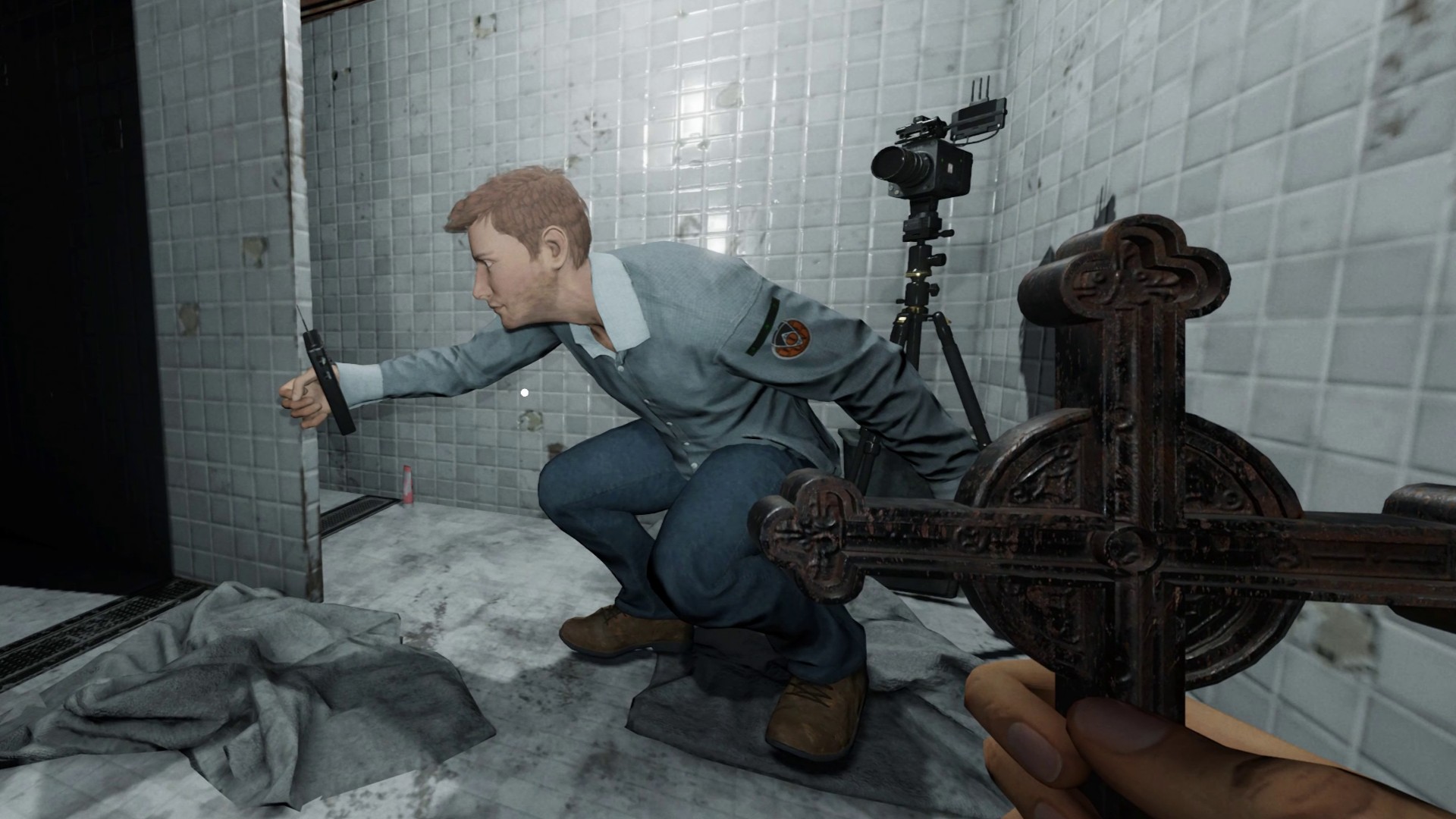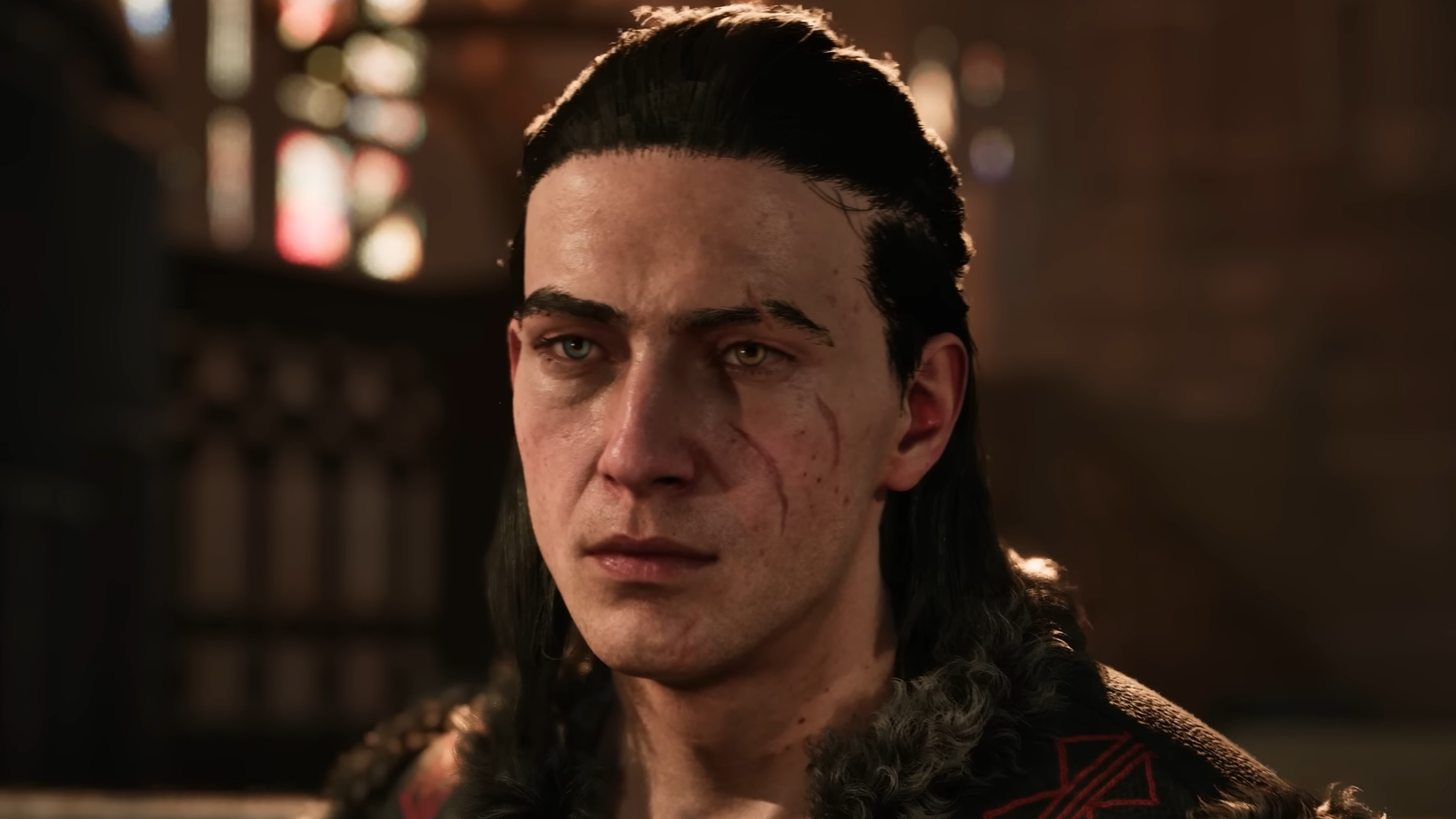
The limited time I got to spend with a slice of Flying Wild Hog’s Evil West felt almost like I was time traveling. A linear third-person action game? With hidden collectables? With no side quests? Checkpoints that don’t involve bonfires? Open areas that double as combat arenas to crunch through enemies before moving on to do it again? They don’t make them like this anymore, and a game like this really makes me wish they did.
Set in an alternate 18th century, where the West is still wild, but also filled with vampires, you play as Jesse Rentier, star agent and heir apparent of the Rentier Institute, an organization of vampire hunters powered by sci-fi tech and government spending. As the tough-as-nails man on the ground, you’re the go-to for when a dirty job needs doing. In the demo level I played, that job was recovering missing technology in a snowy mine.
Story and character exploration were very light in this build. Even with a sort-of sidekick to banter with, Jesse seems largely like your run-of-the-mill tough-guy protagonist who would rather shoot off a gun than his mouth. Meanwhile, much of the setting is cool on the surface. The Nikola Tesla-inspired electropunk tech is gaudy and over-designed in a way that attracts more than repulses. The unnatural tech juxtaposes starkly with the supernatural brutality of many of the vampire designs, as well.
The Nikola Tesla-inspired electropunk tech is gaudy and over-designed in a way that attracts more than repulses.
When the shooting starts, Jesse is more than prepared, both with more mundane and traditional firearms, and mechanical tricks that make up for the magical power gap between him and his enemies. The base of my offense came in the form of his gnarly gauntlet. You can mash for quick face-beating combos, or hold down the attack button to launch an enemy airborne. Follow it up with a diving punch, or quickly draw your pistol and fill them full of holes before they drop. Making these decisions on the fly is a cinch because every weapon is on its own dedicated button or happens in its own specific scenario. For example, if I want to fire the pistol, I press the shoot button. If I want to hit longer range targets with my rifle, shoot while aiming.
The Rentier Institute provides you with some other gadgets as well. Your energy shield isn’t the kind you hide behind to absorb attacks for you, but if you time it correctly, any enemy that attempts to touch you gets sent into high-voltage seizures, leaving them open for big damage. The crippling rod can do the same, but to a whole slew of enemies at once. Outside of being flashy, all of your tools feel like they are tailor-made for specific situations, and none feel like they are made irrelevant or redundant when compared to the others. I really loved that the variety of actions didn’t step on its own toes.
There looks to be a ton of ways to upgrade and personalize your tools around your preferred playstyle. You can add more functionality to your weapons, like being able to get bullets spent shooting weak spots on monsters refunded. Or you can add more character-focused perks that give you new abilities or alter and extend ones you already have. Standard skill tree stuff at first glance, but when you start seeing these knock-on effects add up, Jesse really starts becoming the kind to one man army they present him to be.
Finally, the vampires here aren’t your Bela Lugosi Draculas. Some are skinless feral beasts whose bodies are flailing around on autopilot in search of your neck. Some are almost like hives for large glowing explosive insects that march to their deaths to ensure yours. These are inventive and sometimes pretty challenging creatures that definitely make me want to know more about what weird horrors lurk in the shadows of this alternate-history America.
Each encounter feels handmade to create a specific sort of challenge, making it feel more like a deliberate puzzle than a happy accident.
The linearity of the stage I played was counterbalanced fairly well by the amount of nooks and crannies that were scattered around to find consumable items, money, or other collectables. I wasn’t particularly moved to search every inch of the stage in this demo, but I can see the more OCD gamer having plenty of boxes to check in a full release. Such straightforward design may seem out of step with today’s forever games, but I really appreciated the focus on making the elements you can interact with feel vibrant and intentional. No, I can’t “see the mountain in the background and climb it,” but each encounter feels handmade to create a specific sort of challenge, making it feel more like a deliberate puzzle than a happy accident.
The small demo time I got with Evil West left me thirsty for more Old West vampire hunting. In a year that, somehow, finds three notable games set in a dark and haunted Wild West, Flying Wild Hog’s remains unique not just among its setting counterparts, but its genre contemporaries. Action is easy to get your head around quickly, but reveals new layers of depth and strategy with every new powerful upgrade, bizarre tool, and fanged foe.





